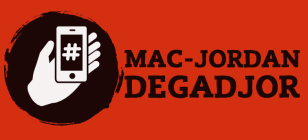Twitter is the best place to connect with other people, brands and organizations. This post highlights the processes involved in getting one’s Twitter account verified in 2019.
With over 350 million Monthly Active Users (MAU), Twitter has become one of the most engaging and addictive social networking platforms that have also become home of breaking news and trending topics and issues around the globe.
Being verified on Twitter comes with a package of goodies, including being a mark proving authenticity and ranking top on search results.
What is Twitter verification?
A verified Twitter account is most easily identifiable by the little blue checkmark alongside a celebrity, politician, journalist, or other official individual’s name.
A verification checkmark is like having Twitter vouch for your identity. This does not mean it agrees with or endorses what you say. It just means Twitter has approved who you are.
According to the social media platform, “The blue verified badge on Twitter lets people know that an account of public interest is authentic. The badge appears next to the name on an account’s profile and next to the account name in search results.”
The verification badge helps prevent impersonation and confusion as to who actually said what, making it a necessity for big brands leveraging Twitter marketing.
With more than 335 million active users on Twitter, you can bet many of those profiles were created to imitate, satirize, or serve as fan pages for people of public interest. The verified badge confirms that all tweets coming from that profile are credible and can be reasonably linked to the main user or brand unless otherwise stated.
Who can get verified on Twitter?
The process of getting approved for verification is somewhat subjective. You know those sweepstakes commercials with the rapid-moving dialogue at the end saying, “Many will enter, few will win?” Think of that as a good way to describe it.
Twitter is ultimately in charge of accepting or rejecting requests for verification.
According to the verification FAQ, “An account may be verified if it is determined to be an account of public interest. Typically, this includes accounts maintained by users in music, acting, fashion, government, politics, religion, journalism, media, sports, business, and other key interest areas. A verified badge does not imply an endorsement by Twitter.”
In short, not everyone has to be an A-list celebrity to get verified. Verification benefits public figures, such as journalists and politicians, because it tells users who they can trust in times of crisis.
Processes to verify your Twitter account
The actual process of getting verified on Twitter is much like an application for any sort of clearance. First, you have to have the right information accurately listed on your profile. This includes:
- Having a profile photo
- Having a cover photo
- Using your real, government name on your profile
- Including a website that you have either for yourself, your business, your publication, etc.
- Having a confirmed email address and phone number listed
- Having a public account
- Filling out the verification form and providing necessary identification documents, such as a Passport or other government-issued identification documents
Update on Twitter Verification
As at November 2017, the micro-blogging network paused general requests for verification while it worked on a new verification program. But if you are in the government or a politician you can still make a request using the form below.
4 / We're working on a new authentication and verification program. In the meantime, we are not accepting any public submissions for verification and have introduced new guidelines for the program. https://t.co/j6P0HGXIVq
— Support (@Support) November 15, 2017
If you’re a government official, government agency or a politician, you can still apply for verification using this Twitter Verification form.










